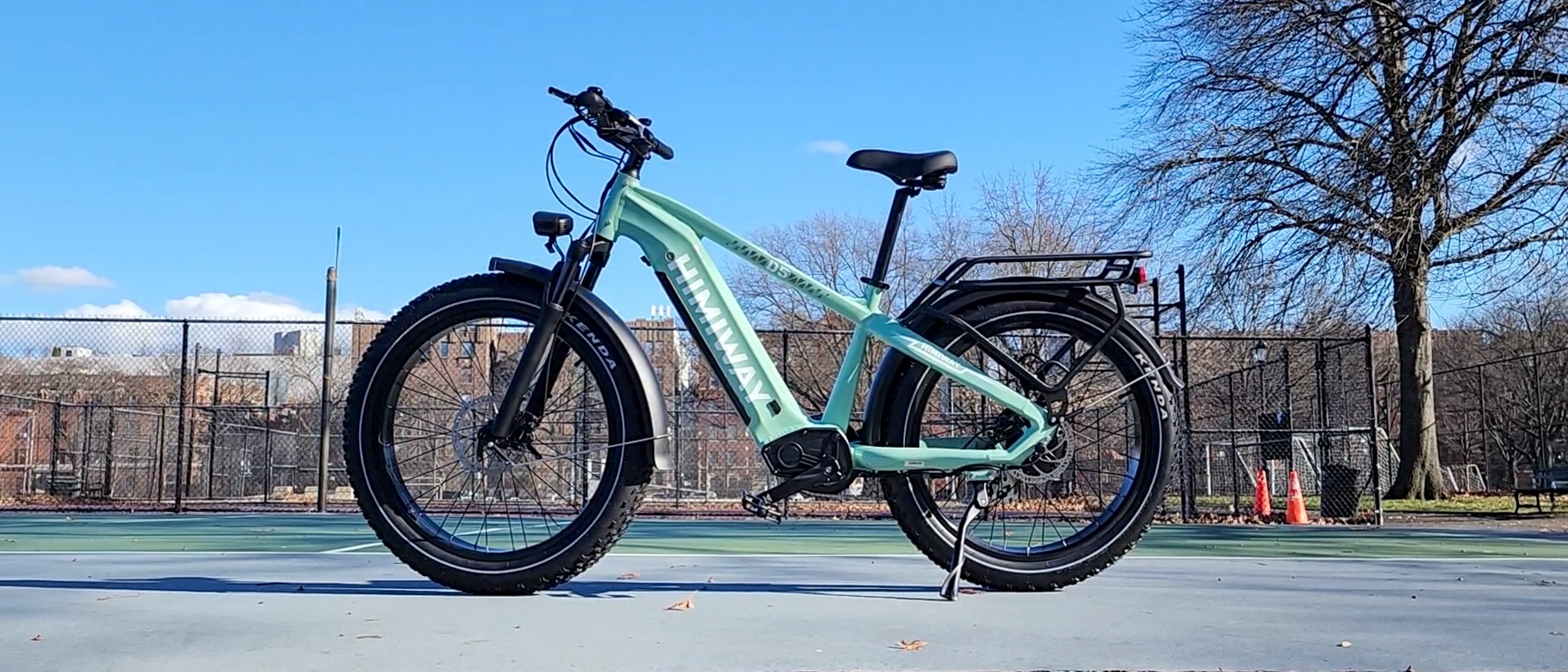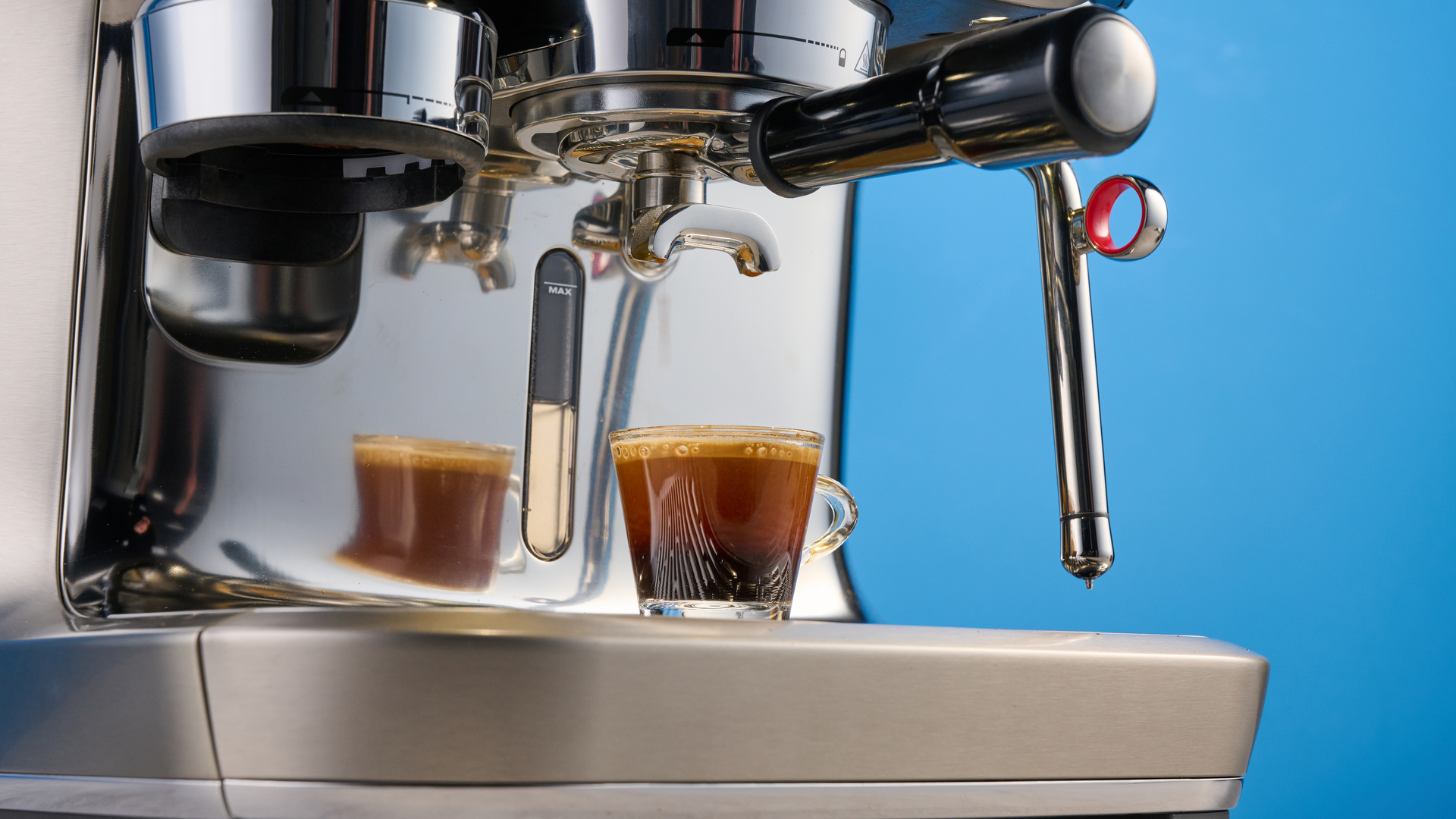Tom's Guide Verdict
Thanks to a rock-solid (albeit heavy) frame, plenty of power under the hood, and a slew of useful features on the backend, the Himiway Zebra is bulkier than the average ebike, but the extra endurance and surprising ease of use justifies its premium price tag.
Pros
- +
Powerful 750W motor
- +
Extra-wide 26x4-inch tires
- +
Sturdy 6061 aluminum construction
- +
Rated up to 80 miles on a charge
- +
Built-in headlight and brake light
Cons
- -
Extremely heavy frame
- -
No rear seat attachment
- -
No turn signals
Why you can trust Tom's Guide
Weight (with battery): 79 pounds
Total payload capacity: 400 pounds
Motor: 48V, 750W brushless gear motor
Battery: Removable Samsung/LG lithium-ion 48V 20Ah
Display: LCD monochrome (with USB charging)
Drivetrain: 7-speed Shimano
Throttle included: Yes
Max assist speed: 25 mph
Maximum range: 60 to 80 miles
Assist levels: 5
The Himiway Zebra is an all-terrain electric bike that could easily be mistaken for a dirt bike, and that’s hardly a bad thing in the wide world of fat-tire ebikes. As the latest addition to Himiway’s growing stable of hybrid vehicles, the Zebra was built to navigate the world with aplomb — rain or shine.
While lifelong cyclists have no doubt grown accustomed to light-as-a-feather road bike frames over the years, those skinny tires aren’t meant for the dirt, and that’s where the Zebra’s extra girth comes in. In short, this fat-tire ebike isn’t afraid of the great outdoors, and there’s a lot to like about the overall feature set, starting with that extra horsepower.
Fat-tire bikes are nothing new in mountain biking, of course, but they’re still a novelty in the subsector of ebikes, featuring built-in motors to tackle tougher terrain than your quivering quad muscles could rightfully handle all on their own. Is the Zebra one of the best electric bikes on the market? We took it out a ride to find out.
Himiway Zebra review: Price and availability
Announced in September 2023, the Himiway Zebra is available for $1,999 from the company’s website in both high-step and step-thru models, with four different colors to choose from.
This includes free shipping, a 15-day return period, and a two-year limited warranty to cover the frame, battery, parts, and components. (As of April 2024, the Zebra was on sale for $1,499 from Himiway and Bed Bath & Beyond. Presumably in the Beyond section.)
Himiway has a variety of other fat-tire ebikes to choose from, such as the Rambler, Cobra, Big Dog, and the underwhelmingly named C1, which is made for kids. With MSRPs ranging from $799 to $3,799, the Zebra isn’t their most expensive ebike, but it isn't the cheapest, either.
Himiway Zebra review: Assembly
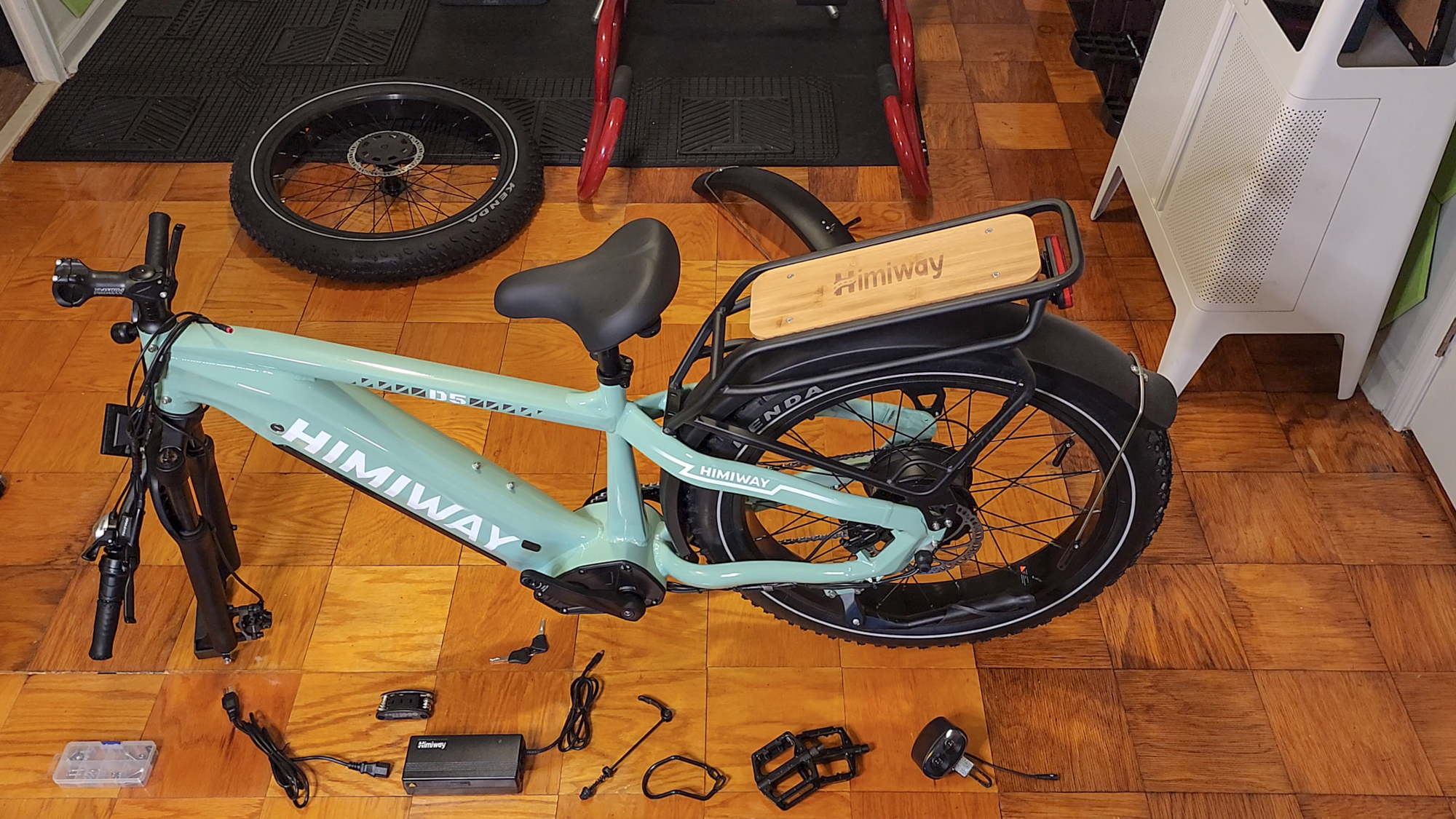
First things first: let’s talk about the extra bulk. If not for those pesky pedals, one could easily mistake the Himiway Zebra for a snazzy moped at first pass, especially once you put your paws on that monstrous 79-pound frame.
Get instant access to breaking news, the hottest reviews, great deals and helpful tips.
Unless you have a garage or dedicated storage space, you should definitely check that the bike will fit in your home. The bike measures 78.7 inches from end to end, and 79 pounds is way too heavy to haul up a standard stairwell by hand. If you live in an apartment building, make sure this ebike can squeeze through the front door and into an elevator.
My Himiway Zebra came mostly pre-assembled in the box, so I didn't have to be an ebike mechanic to put it together. But not every manufacturer takes a similar approach, as one of Tom's Guide's writers recently discovered when he had to build his ebike at home. Meanwhile, it took me less than an hour to finish the relatively simple assembly process.
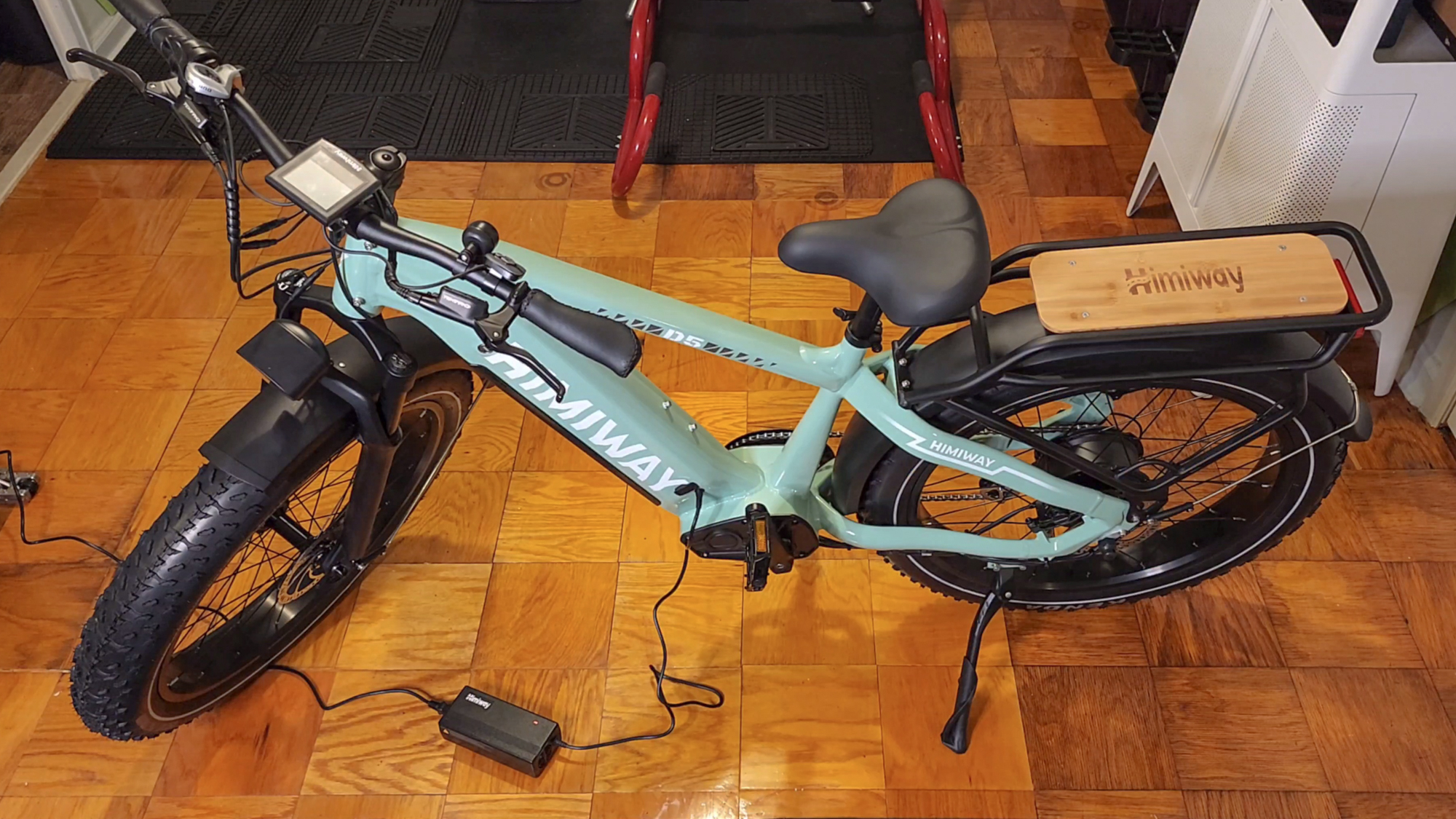
The only stumbling block was that installing the front wheel took a little more finesse than expected; the wheel hub wasn’t aligned on my first try, causing friction against the brake rotor until I got it right. At 6’3'' and 180 pounds, my lanky body is just shy of Himiway’s recommended 6’4'' height upper limit.
While the Zebra was built to take some abuse on the trail, Himiway recommends storing the ebike “under shelter, avoiding extended exposure to cold or inclement weather.” The battery and motor aren’t meant to be fully submerged, either.
In short, if you get the bike wet (or muddy) during your travels, give it a wipe-down when you get home to keep everything in pristine condition.
Himiway Zebra review: Design
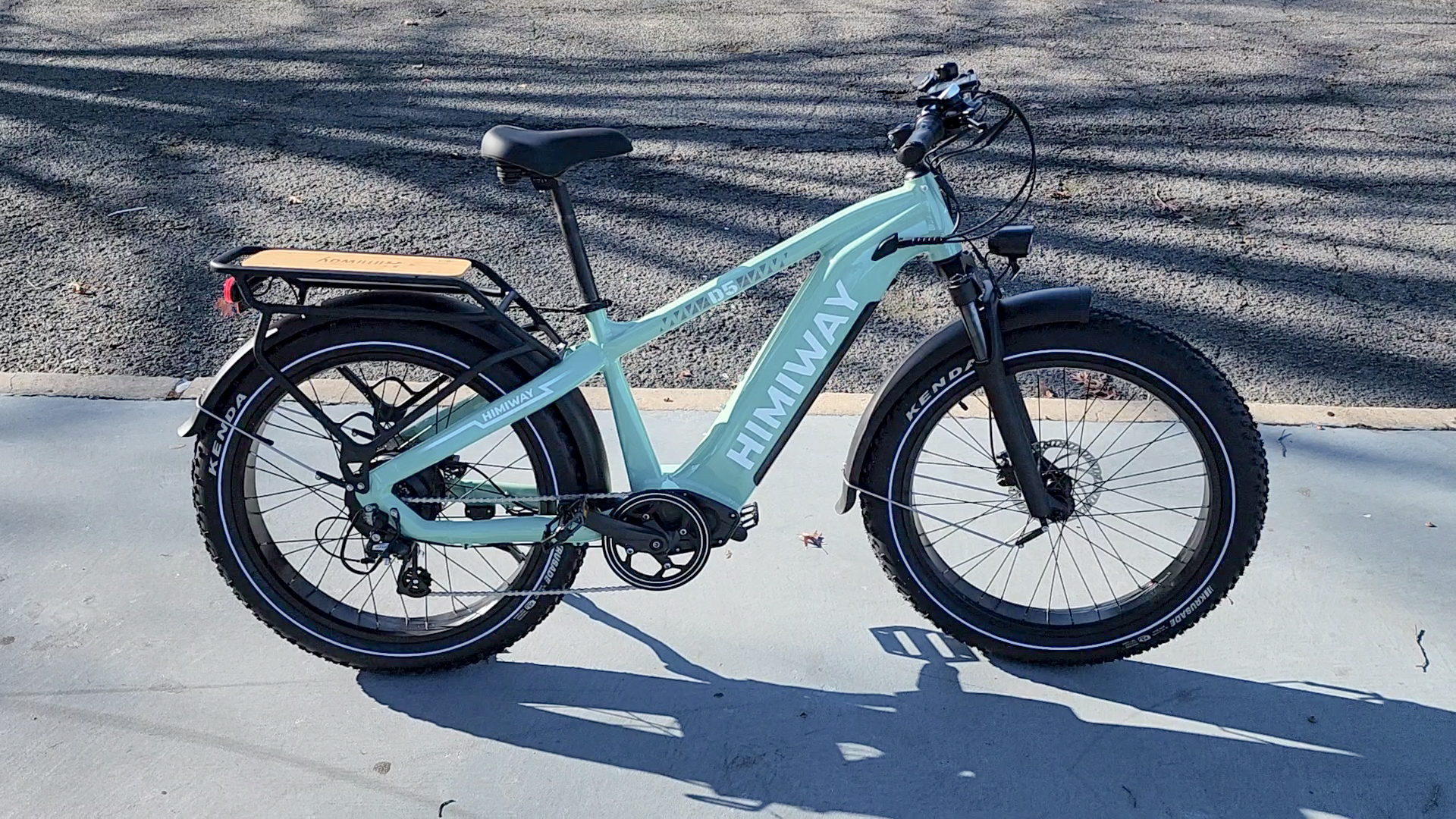
Boasting aerospace-grade 6061 aluminum that’s “two times thicker than conventional bike frames,” this beast is much heavier than the average road bike or mountain bike — which generally sit around 50 pounds — but the overall form is also a lot more capable.
The frame has an impressive 400-pound payload capacity (designed for riders between 5’ 3” and 6’4”), and those all-terrain 26 x 4-inch Kenda fat tires provide tip-top traction on sand, gravel, concrete, and mountainous terrain in virtually any weather — including snow and ice.
But because of its weight, the more challenging the terrain you’re facing, the more upper-body strength you’ll need to steer this bulky bike from one rut to another. Which is actually a lot of fun; those fat tires do an excellent job of hugging the ground and navigating rocky terrain, no matter what kind of slop was on top.
The Zebra qualifies as a Class II ebike — maxing out at 20mph with throttle assist and pedal assist — but you can convert it to a Class III ebike via the LCD, bumping that max speed up to 25mph in the settings.
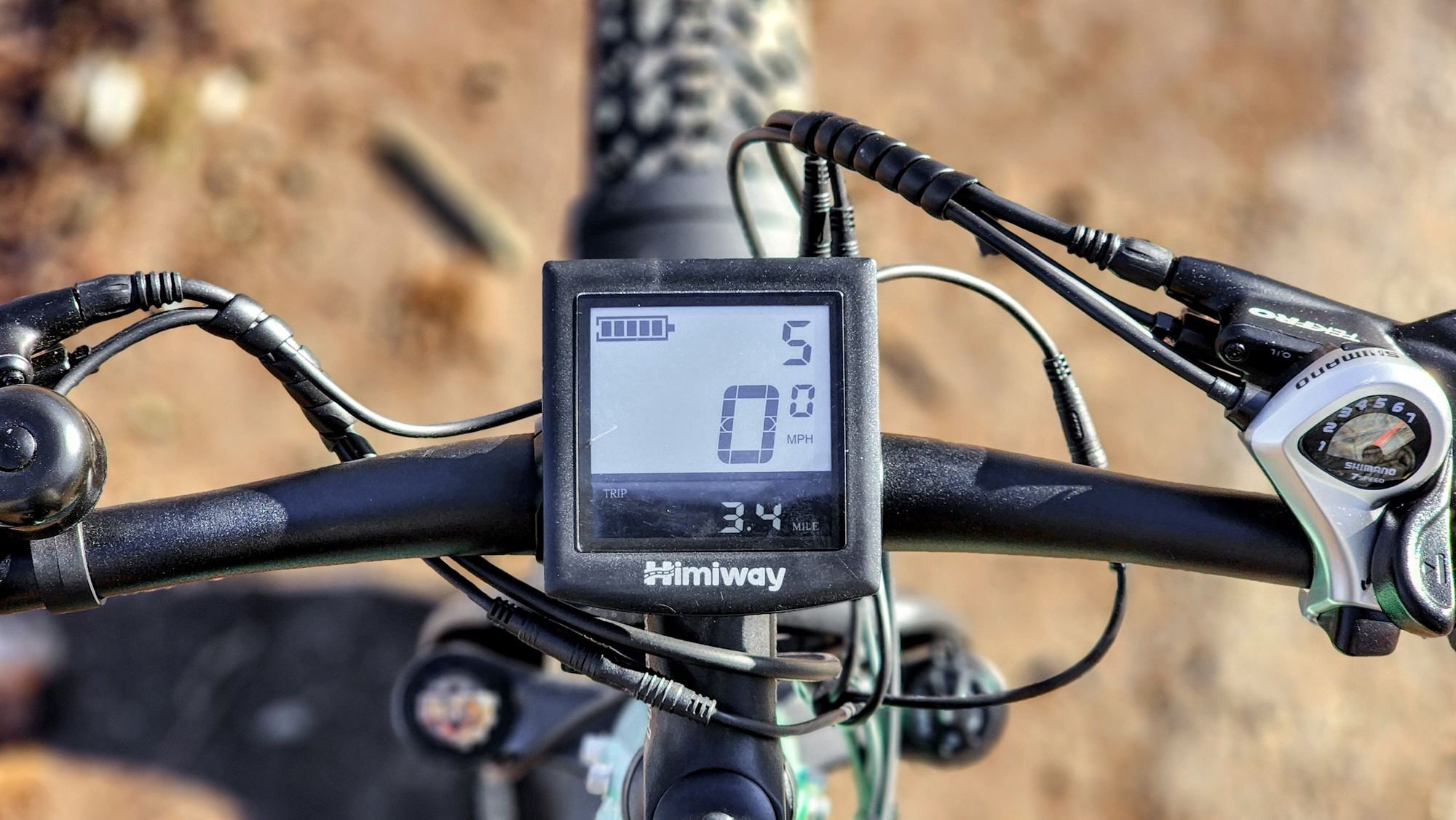
From the display, you can view your current speed and toggle between the odometer, trip mileage, and ride time, among other standard functions; it’s flanked by a 7-speed Shimano gear shifter and dedicated buttons for adjusting pedal assist and other settings. There’s even a hidden USB port for your mobile accessories, which is a nice touch.
The 48V 20Ah Samsung/LG battery locks securely inside the bike frame below the seat and requires a key to remove, so it's not likely to end up missing when you've stored your bike away while on the go.
Like other electric bikes we’ve tested recently, the 750W brushless geared hub motor is integrated right into the bike's rear wheel. When pedal assistance is activated, a sensor detects how much effort you’re putting in, and the motor gives your legs a boost, up to 86 Nm of torque.
The half-twist throttle on the right handlebar allows for manual speed control, and cutting the power entirely is as simple as engaging either one of the hydraulic brake levers, which simultaneously engages the brake light.
This is an especially useful feature in terms of preventing rear-end collisions after dusk; there’s also a 48V luminosity spotlight up front for enhanced visibility at night, and a dedicated button on the control panel to turn it on and off.
Himiway Zebra review: Performance

I spent a month with the Himiway Zebra, traveling 46 miles across a range of terrains in a variety of winter weather conditions, crossing urban spaces, parks, and more challenging paths as I went.
I live in Brooklyn, and since I received my review unit during New York City’s coldest, wettest time of the year, I truly put those extra-wide Kenda tires to the test in the aftermath of all sorts of wintery weather, including rain, ice, mud, and slushy snow.
To put the Zebra through its paces, I powered the battery up to 100%, layered myself up for the elements, and hit the road. Most of my testing took place in Prospect Park, which offers a surprisingly diverse collection of terrain for those chubby tires to chew through: namely concrete, dirt, gravel, grass, and sand.
The Zebra isn’t afraid of mud, either, and the splash guards did a good job of keeping me relatively clean when things got extra sloppy. Maneuvering the bike from a dead stop was a bit cumbersome at times, but once I got moving, hoo boy!
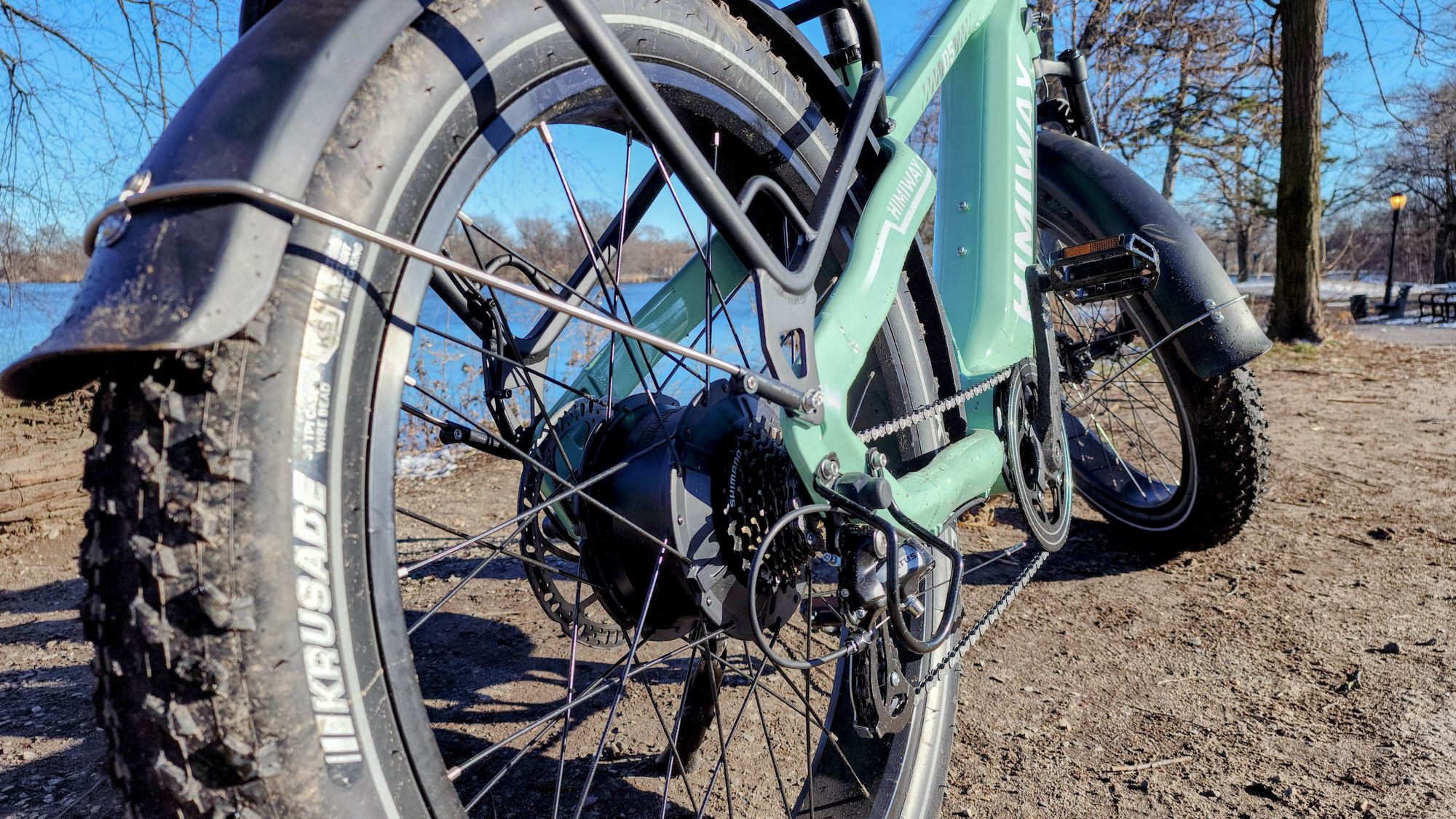
When engaged, the motor kicks in as you start pedaling, which takes some getting used to amidst the ebb and flow of city cycling, especially at traffic lights. Once my brain adjusted to the extra power behind my legs, zipping through the park was a lot of fun; those 4-inch fat tires let me take on certain hills — and partially frozen terrain — that I never could have attempted with a regular road bike.
All that extra tread feels predictably out of place on city streets, of course, but once I traded in the concrete for dirt and gravel trails, the Zebra made good on its name in terms of hugging the ground, and those hydraulic brakes let me stop on a dime.
While those bouncy fat tires absorbed plenty of shock on the trail, the Zebra’s front suspension did a solid job of leveling out my ride as I rolled over rocks, frozen mud, and exposed ruts; the grippy treads hugged the ground like cloven hoofs, even around sharp turns.
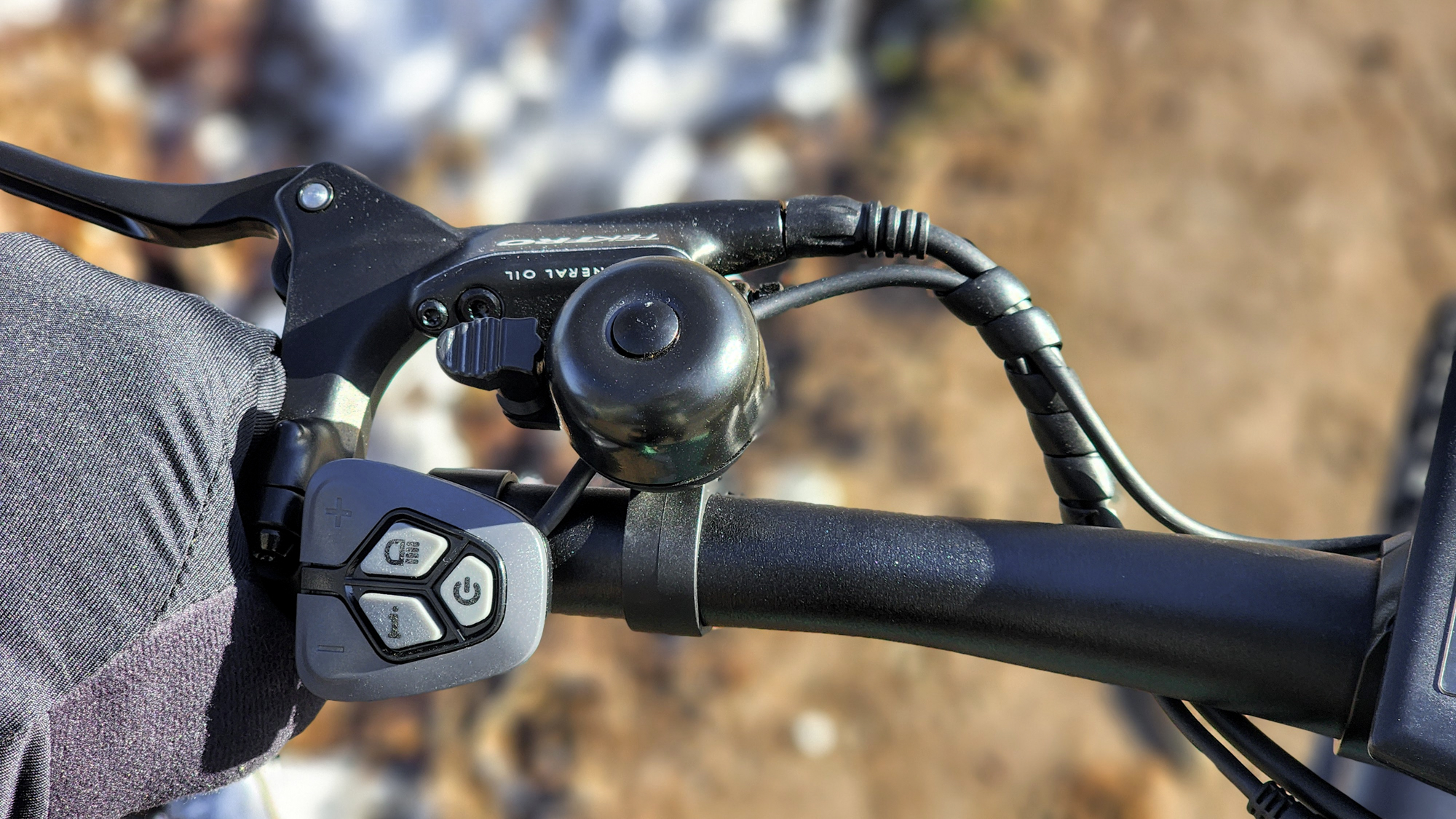
Whether engaging the battery via pedal assist or the half-twist throttle, I experienced minimal lag between input and motor engagement. On level ground, the Zebra zips right up to max speed (25mph) in a matter of seconds, and it’ll keep going strong on extended inclines.
To test the motor’s overall power, I biked one lap of the park with the battery turned off, during which the steepest hill took me down to just 5mph in first gear. With the throttle in manual mode, however, I could tackle the same hill at a steady 20mph — without even using my legs!
To give you an idea of how much energy the Zebra is saving you with pedal assist engaged, consider the workout data below, collected from my trusty Coros Vertix 2. During the first unassisted lap (3.37 miles), I burned 156 calories over 16 minutes and 34 seconds, with an average speed of 12.2mph.
During the second lap, I cranked the pedal assist up to level 5, covering the same distance in just 9 minutes and 1 second, averaging a much faster 22.5mph, and burning only 63 calories in the process. I continued for another 15.11 miles, racking up a fairly low 639 calories in just over an hour.
Himiway Zebra review: Battery life

Given the initial cost of the bike, it's worth taking care of the 48V 20Ah Samsung/LG battery since a new one will set you back $689. To maximize overall longevity, Himiway recommends charging it back up to 100% after each use without ever draining it completely.
After 18.49 miles of intermittent pedal- and throttle-assisted testing on a sunny, 35-degree Fahrenheit day, the battery life indicator slipped from five bars (100%) down to two bars (roughly 40%) by the end of my testing session.
At that rate, I might have been able to squeeze 40 miles total out of the battery if my frigid fingers could have lasted a bit longer, which is a far cry from the company's best-case scenario of 60-80 miles. To be fair, Lithium-ion batteries aren’t at their best in colder weather, and my testing came with an inevitable windchill factor.
Himiway Zebra review: Accessories
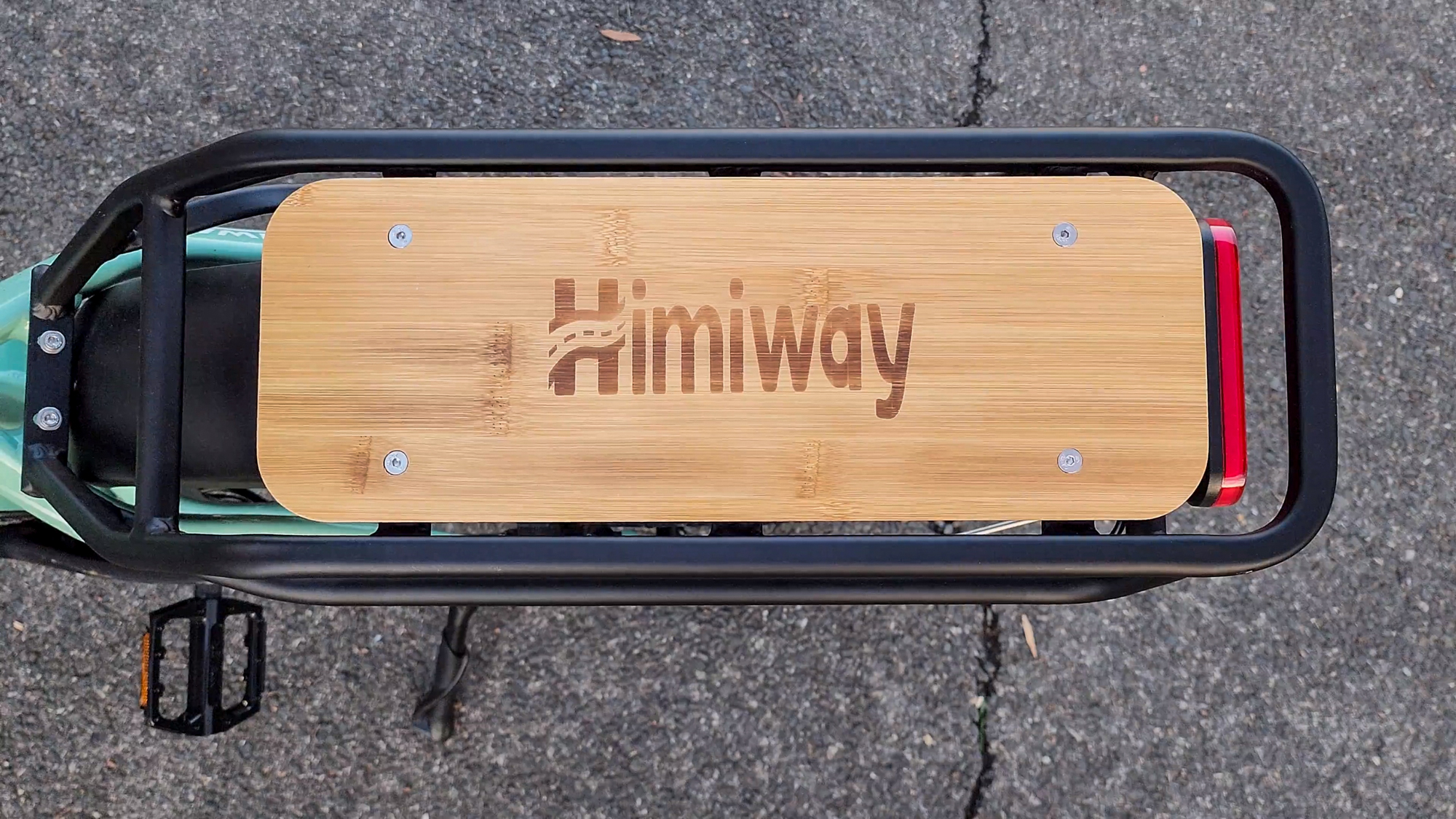
Himiway carries itself as a premium brand, and the Zebra is saddled with a variety of useful bells and whistles right out of the box — starting with a literal bell on the left handlebar to let everyone know you’re on the move.
Integrated turn signals would have been nice, but at least the bike is equipped with built-in brake lights, a headlight, and reflective sidewall stripes on the tires.
In terms of overall butt cushioning, the Selle Royal Saddle is more ergonomic than the average bike seat, and it felt plenty comfortable during testing, even for longer rides.
An integrated rear rack — complete with the wooden platform — adds an extra touch of class to this ebike, allowing you to take full advantage of that 400-pound payload capacity; a swappable seat attachment for passengers would have been nice.
While every ebike on the market is designed to expedite your commute from point A to point B, the Himiway Zebra’s mammoth frame can be accessorized to your heart’s content — if your pockets are deep enough, anyway.
Himiway offers a plethora of useful ebike accessories from their website, including rearview mirror attachments ($49); front-mounted baskets ($89); rear-mounted racks ($99); waterproof bags ($89); and even a foldable cargo trailer ($219).
Himiway Zebra review: The competition
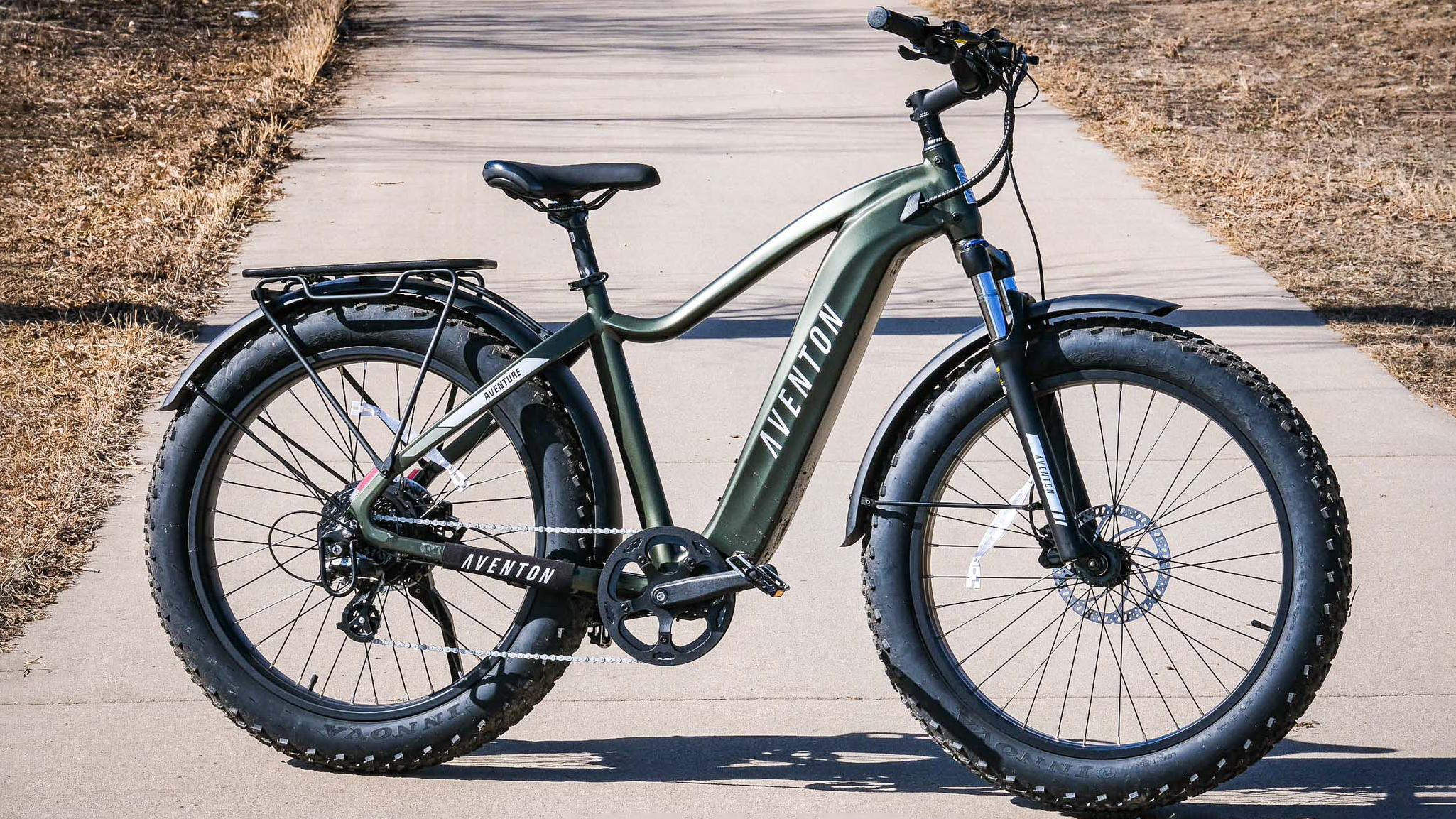
If you can find the Zebra at a discount, I’d certainly place it on par with the equally bulky Aventon Aventure.2 ($1,799), which offers a nearly identical feature set, right down to the chunky 77-pound frame, 750W motor, removable 48V lithium-ion battery, and 400-pound weight limit.
The Aventure.2, however, boasts a max assist speed of 28mph (versus 25mph) and 8-speed drivetrain (versus 7-speed), paired with a max advertised range of 60 miles. But if you’re looking for a fat-tire ebike that can potentially replace your car, consider the Radpower RadRunner 3 Plus ($2,299).
This features all-terrain 4-inch fat tires, a top-notch 350-pound payload capacity, and plenty of swappable accessories. At 75.5 pounds, it is a good option for carrying larger loads, and the rear cargo basket can even be swapped out for a padded passenger seat, making it ideal for couples and families.
On the hunt for a fat-tire ebike that’s all about micro-mobility? Check out the Juiced Ripracer ($1,599), a sporty BMX-style ebike that’s as capable on the trail as it is on the street. The 20-inch wheels are designed for all-terrain excursions, and its best-in-class handling will keep you on the move for hours at a time.
Should you buy the Himiway Zebra?
The Himiway Zebra packs a lot of premium features into a fairly portable package for its mid-range $2,000 price tag. The fat-tied ebike is noticeably bulkier than the average mountain bike, and the 79-pound frame takes a little getting used to on the trail.
After using it for a month on trails and roads, and with several laps through the city park, I had an excellent experience with this all-terrain ebike, despite the colder weather conditions.
Those grippy tires aren’t scared of anything, and all that extra power from the 750W motor made my legs feel superhuman as I zipped through my neighborhood. The Zebra’s frame might be a little heavy, but it’ll make light work of your weekly commutes — or your next adventure.

As a freelance journalist, TJ has over a decade of multi-medium storytelling under his belt. Leveraging a quarter century of collective coddiwompling amid the ever-evolving landscape of wireless gadgetry, his unique editorial background allows him to explore a variety of tech-centric subsectors on this fascinating planet. When he's not field testing new gear in the Catskills, Adirondacks, or an actual field, he can be found sipping Negronis in his living room and crafting Dr. Seussian poetry inside a tattered moleskin.
